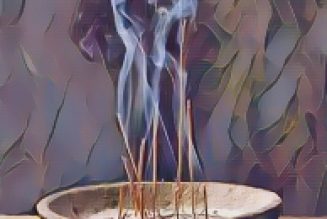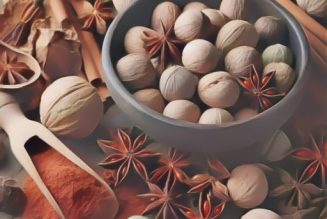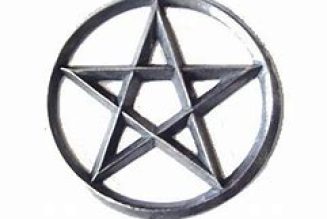Sunflowers—scientifically known as Helianthus annuus—are among the most iconic and instantly recognizable plants in the world. Their name comes from the Greek words “helios,” meaning sun, and “anthos,” meaning flower, a fitting tribute to their radiant, sun-like appearance. Native to North America, sunflowers have been cultivated for thousands of years, both for their beauty and their remarkable versatility.
The sunflower is an annual plant, meaning it completes its entire life cycle in a single growing season. It can range from compact, bushy varieties just a foot tall, to towering giants that soar over 16 feet high. The most familiar sunflower features a large, daisy-like flower head, often bright yellow with a deep brown or maroon center, but cultivated varieties can display a stunning palette of colors—red, orange, gold, bronze, and even creamy white.
Botanically, what we call a “sunflower” is actually a composite flower. The central disk is made up of hundreds, sometimes thousands, of tiny individual florets, each capable of producing a seed. Surrounding this disk are the showy, petal-like ray florets that give the sunflower its signature look. The flower heads of some varieties can reach over 12 inches in diameter, creating a dramatic focal point in any garden.
Sunflowers are famous for their heliotropism—the ability of young flower buds and leaves to track the movement of the sun across the sky from east to west during the day, then return to face east by morning. This remarkable adaptation maximizes photosynthesis and growth. Once the flower matures and becomes heavy with seeds, it usually settles facing east, soaking up the morning sun.
There are dozens of cultivated sunflower varieties, each with unique characteristics. Giant sunflowers like ‘Mammoth’ are grown for their impressive height and large seeds, while dwarf varieties such as ‘Teddy Bear’ or ‘Sunspot’ are perfect for containers and small spaces. Some sunflowers are bred for their edible seeds, others for their oil, and many simply for their ornamental value.
Sunflowers are incredibly resilient. They thrive in full sun, tolerate heat, and are resistant to many pests and diseases. Their deep taproots help them access water and nutrients, making them well-suited to a variety of soils, as long as drainage is good. Sunflowers are also heavy feeders, so they benefit from rich, organic soil or compost.
Beyond their beauty, sunflowers have a rich history of uses. Indigenous peoples of North America cultivated sunflowers for food, oil, dye, and even medicinal purposes. Today, sunflower seeds are a popular snack, a source of high-quality cooking oil, and a vital ingredient in birdseed mixes. The stalks can be used for fiber, and the flowers themselves attract pollinators like bees and butterflies, supporting healthy ecosystems.
But sunflowers are not just valued for their practical uses—they hold a special place in magical traditions and witchcraft. In the world of magic, sunflowers are powerful symbols of the sun, radiance, and life-giving energy. Their bright, open faces are believed to attract positivity, happiness, and abundance, making them a favorite in rituals focused on joy, success, and personal growth.
In witchcraft, sunflowers are often used to invoke the power of the sun during spells and rituals. Placing sunflower petals or seeds on an altar can amplify intentions related to prosperity, vitality, and protection. Sunflower oil, infused with the plant’s energy, is sometimes used to anoint candles or tools for solar magic, especially during the summer solstice or other sun festivals.
The sunflower’s heliotropic nature—its ability to follow the sun—has inspired many magical correspondences. Practitioners use sunflowers to help “turn toward the light” in their own lives, seeking clarity, hope, and spiritual guidance. In spellwork, sunflower petals are added to charm bags or sachets to attract good luck, dispel negativity, and encourage confidence. Some witches write wishes or affirmations on sunflower seeds and plant them, symbolizing the growth of their desires.
Historically, sunflowers have been associated with solar deities and sun worship across cultures. In ancient Aztec and Incan traditions, sunflowers were sacred to the sun god and used in ceremonies to honor the life-giving force of the sun. In European folklore, sunflowers were believed to guard against evil spirits and bring blessings to the home when planted near doorways or windows.
Sunflowers are also used in love and loyalty spells. Their steadfast orientation toward the sun is seen as a metaphor for unwavering devotion. Placing sunflower petals under a pillow is said to bring dreams of one’s true love, while gifting a sunflower to a friend or partner symbolizes loyalty and lasting affection.
In modern witchcraft, sunflowers are popular in rituals for happiness, healing, and manifestation. Their seeds can be used in abundance spells, while the flowers themselves are often included in summer altars and celebrations. Burning dried sunflower petals as incense is thought to purify a space and invite solar energy, while carrying a sunflower charm can boost confidence and attract positive attention.
Folklore also tells of sunflowers being used to reveal the truth or expose deception. In some traditions, placing a sunflower in the window is believed to encourage honesty and transparency within the household. The flower’s association with light and clarity makes it a powerful ally in spells for truth-seeking and personal insight.
Interesting fact: Sunflowers were even used in the aftermath of nuclear disasters, such as Chernobyl and Fukushima, to help extract toxic elements from the soil—a process known as phytoremediation. Their ability to absorb heavy metals makes them not just beautiful, but also powerful allies in environmental healing.
At the end of the season, harvesting sunflower seeds is simple and rewarding. Once the back of the flower head turns brown and the seeds are plump, simply cut the head and let it dry. The seeds can be roasted for a delicious snack, saved for next year’s planting, or shared with wildlife.
If you’re considering growing sunflowers, here’s how to get started:
Plant sunflower seeds directly into the garden or outdoor containers after the last spring frost, when the soil has warmed to at least 50°F. In most regions, this means sowing seeds from April to mid-July, or as early as March in warmer southern climates.
Choose a sunny spot—sunflowers need at least 6 to 8 hours of direct sunlight each day. They prefer well-draining soil that’s loose enough for their long taproots to stretch out. Dig down about 2 feet and across 3 feet to prepare the bed, and enrich the soil with compost or aged manure. Sunflowers aren’t picky about pH, thriving in slightly acidic to somewhat alkaline soils (pH 6.0 to 7.5).
Plant seeds 1 to 1.5 inches deep and about 6 inches apart. For branching or low-growing varieties, give them extra space to spread. Make rows about 30 inches apart, or closer for smaller types. A light application of fertilizer at planting will encourage strong root growth and help prevent the plants from toppling in the wind.
For continuous blooms, try staggering your plantings every 5 to 6 weeks. If birds are digging up your seeds, cover the area with netting until the seedlings emerge.
Whether you’re growing sunflowers for their cheerful faces, nutritious seeds, their magical properties, or their role in supporting pollinators and the environment, these remarkable plants are sure to bring joy and vitality to your garden. Their story is one of resilience, beauty, and a deep connection to the sun itself—a true celebration of nature’s brilliance and a powerful ally in both the garden and the craft.





















